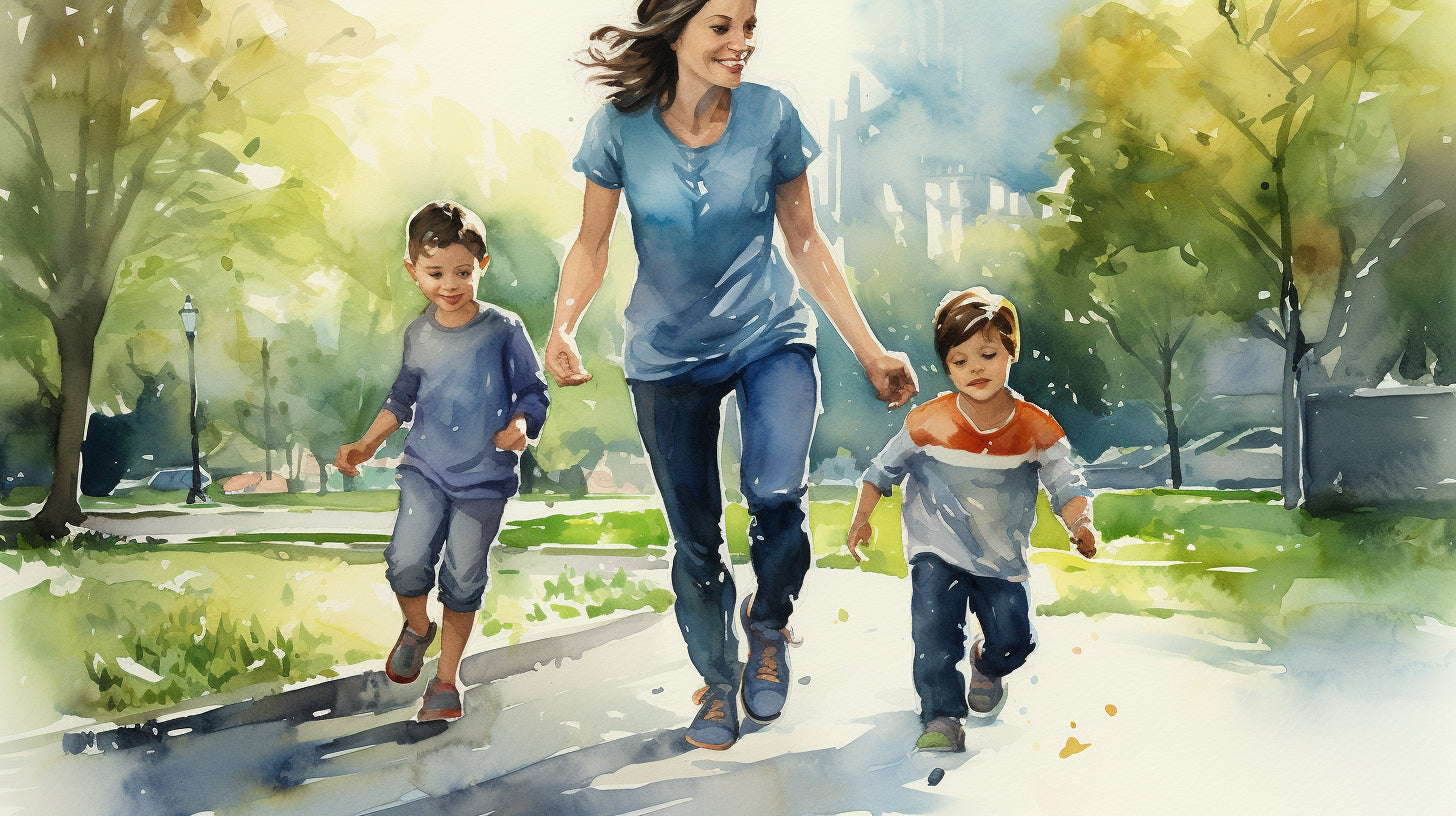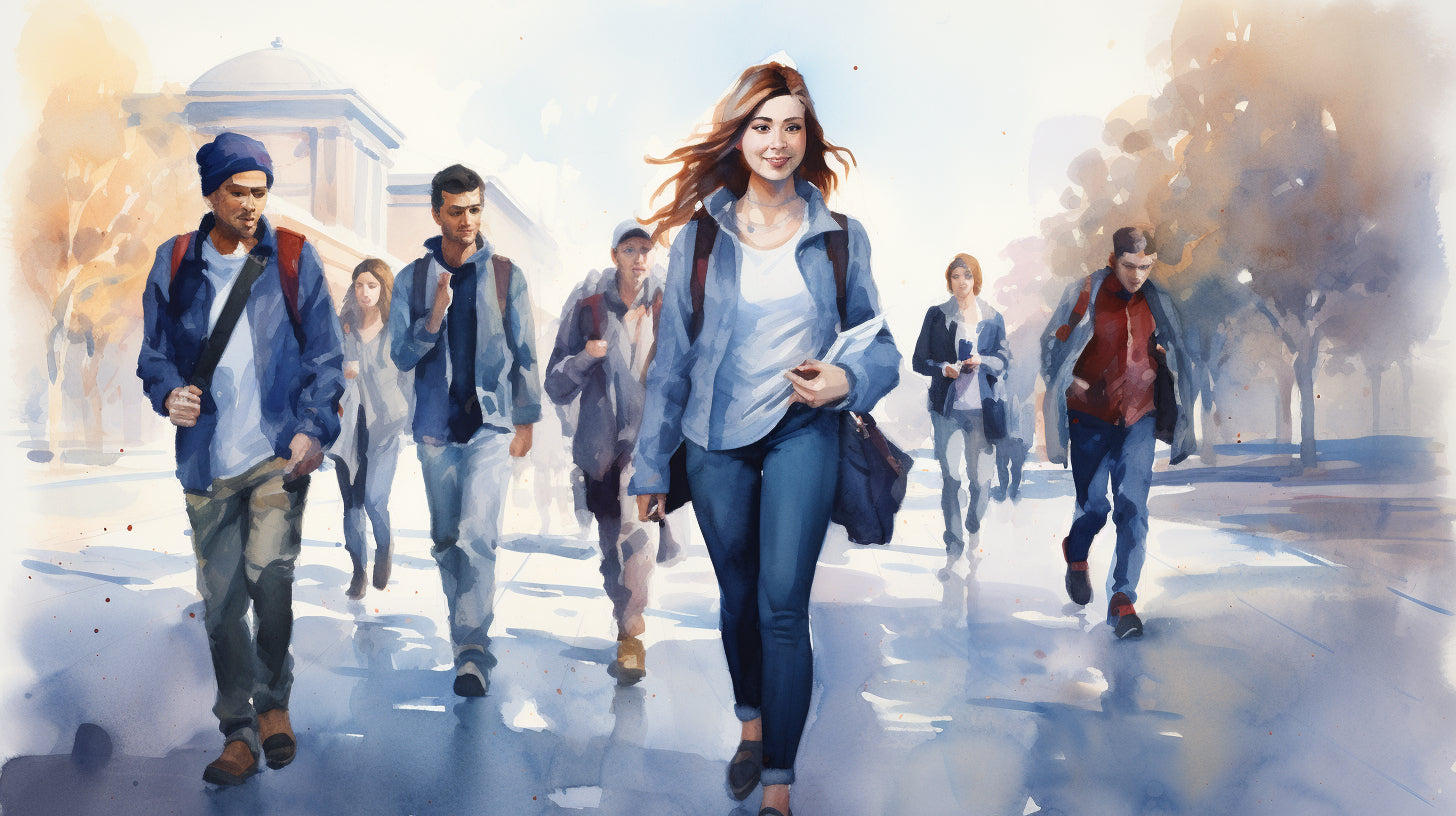With the rise of the remote work culture and increased demand for homeschooling, stay-at-home moms have more opportunities than ever to engage with their children in outdoor activities. An added benefit is that children can soak up some much-needed Vitamin D and reap the benefits of physical activities. However, the outdoors, be it your backyard, patio, or front porch, can present some safety risks. From swimming pools to climbing frames and even the simple garden, each area comes with its unique set of hazards. This article focuses on creating a safe environment for children outdoors, outlining potential risks, and offering actionable tips and recommendations to ensure a secure yet fun-filled atmosphere. It will cater specifically to the concerns of stay-at-home moms, but it can certainly be a guide to all caretakers ensuring the safety of their loved ones when navigating the world outside the four walls of their home.
Major Outdoor Safety Risks for Children
As the sun asserts its dominance, dejected by months of confinement, the play-hungry children are drawn outdoors like moths to a glowing bulb. In their innocent exhilaration, they often are oblivious to the possible dangers lurking within the realms of their playground. When it comes to outdoor activities, child safety needs to be at the forefront. Lest, we overlook, according to a report from NEISS, these three activities often lead to the majority of emergency room visits for children.
Swimming Pools and Bikes
A refreshing plunge into the pool or a liberating ride on a bicycle might sound like the quintessential summer activities. Though they are packed with fun-fuel and healthy exercise, they bear potential hazards for our enthused little ones. A moment’s lapse in monitoring can lead to a distressing pool incident while a slight faltering of their delicate balance on the bike can result in painful injuries. As guardians, it’s crucial to instill in them a sense of safety along with the capability to assess potential risks.
Trampolines
The bouncing thrill of trampolines is magnetic to the invincible spirits of children. However, a miscalculated landing or a slightly botched flip can have harmful consequences. Most injuries from trampoline use include sprains, fractures, and even head injuries. Proper supervision, setting limits, and occasional safety reminders can help to minimize these risks while still allowing children to enjoy this exhilarating activity.
Monkey Bars
The humble monkey bars, a staple in most playgrounds, are a much-loved challenge for those little climbers. And yet, they are one of the most common causes of fractures among children. Balancing playtime fun with safety checks and reminders is the key to minimize their risk while playing.
Remember, the idea is not to incite fear but to promote an understanding of safety measures. There is no substitute for their priceless expressions of joy and pride they radiate upon conquering these challenges. As we let our children explore and play freely outdoors, it's vital to keep them informed, supervised, and equipped to handle these risk areas responsibly and safely, while ensuring they are having a summer filled with fun, laughter, and learning.
Diversity in Outdoor Participants
There is an exciting transformation underway in outdoor activity circles. The face of outdoor enthusiasts is gradually diversifying, making outdoor participation broader and more inclusive. This evolution is elegantly revealed by statistics showing that new outdoor participants are more diverse than the overall outdoor population. In this section, we will explore this newfound diversity and what it means for the future of outdoor activities.
As outdoor lovers welcoming newcomers onto trails, into parks, up climbing routes, we can expect to see a myriad of different faces smiling back at us. This increased diversity among outdoor participants is not merely skin deep; it encompasses a wide variety of socioeconomic backgrounds, cultures, and personal histories. This more diverse group of outdoor enthusiasts offers an unlimited potential for societal growth and personal discovery for all those involved.
Here are some of the benefits associated with the increasing diversity among outdoor participants:
- Shared experiences: When people from different backgrounds come together to share experiences, it results in a greater understanding and appreciation of each other's cultures and histories.
- Improved mental health: Outdoor activities have been proven to be beneficial to individuals' mental health. As more diverse groups engage in these activities, these mental health benefits can reach a wider population.
- Increased activity levels: Encouraging more people to participate in outdoor activities can help to combat the obesity epidemic faced by many societies today.
This newfound diversity among outdoor participants is undoubtedly exciting, but it also comes with challenges, especially when it comes to making sure all participants feel safe and welcome in shared outdoor spaces. It's essential that experienced outdoor enthusiasts play a part in facilitating this change, leading the way to an inclusive and welcoming outdoor community. We must remain dedicated to fostering an open environment where everyone, regardless of their background, feels the thrill of blazing a trail, conquering a challenging climb, or just enjoying the simple serenity of a hike.
A wider diversity among outdoor participants heralds a new era for the outdoor community, full of potential for growth and evolution. It challenges stereotypes and creates the chance for all of us to learn from one another, supporting and teaching as we go. Together, we're proving that the great outdoors is not the realm of any one group; instead, it's a world that is open for everyone to explore and enjoy.
Outdoor-Related Fatality Risks
If you're an outdoor enthusiast, you may be familiar with the common risks like sunburn or encounters with wildlife. However, there are numerous other potential dangers that often fly under the radar. In this section, we're going to dig into some less-known outdoor-related fatality risks, touching on areas like work-related environmental heat exposure deaths, fatal crashes in work zones, and firearms-related hunting incidents. Understanding these risks and learning the applicable safety measures can significantly lower your chances of encountering such dangers.
Work-related Environmental Heat Exposure Deaths
Work-related heat exposure is, sadly, a significant risk, especially for those who spend long periods outside, such as construction workers or athletes. If you or someone you know works in such conditions, the importance of hydration and regular breaks cannot be overstressed. As per statistical data from 2019, there were 43 work-related environmental heat exposure deaths. While each case is tragic, these numbers serve to stress the importance of awareness and proper prevention strategies, such as the use of adequate clothing, hydration, and regular rest in the shade.
Fatal Crashes in Work Zones
Research data indicates an unsettling trend; fatal crashes in work zones increased by 11% between 2018 and 2019. The dynamics behind such accidents generally involve a myriad of reasons like reckless driving, insufficient signage, and improper safety measures within these premises. Therefore, when traversing or working in these zones, it's essential to maintain a high level of vigilance, respect all signage, and understand that your safety is as crucial as the job at hand.
Firearms-related Hunting Incidents
Hunting is a popular outdoor activity enjoyed by many. However, with the excitement and thrill that come with it, some often overlook the potential risks. One such danger is a firearms-related incident. The possibility becomes ever more real when we delve into the numbers — in Alabama alone, there were five firearms-related hunting incidents per 100,000 licensed hunters between 2018 and 2019. These stats underline the importance of firearms safety and hunting protocol to ensure a safe and enjoyable hunting experience.
At their core, outdoor jobs and activities are all about exploring and enjoying nature. But being aware of these less-known risks, adopting necessary safety measures, and making informed decisions can help you keep the adventure alive without compromise on safety.
COVID-19 as an Outdoor Safety Consideration
As we navigate life in the age of COVID-19, the importance of safety precautions has been heightened like never before. This is especially true when it comes to outdoor activities. While the freshness of open air is often considered safe, the COVID-19 pandemic has forced us to reconsider our outdoor safety procedures. Increasingly, COVID-19 is becoming a significant factor in outdoor safety considerations.
It has been observed that the risk of COVID-19 transmission is high in places with dense crowds. These crowded areas, such as parks, outdoor restaurants, and sports arenas, effectively become hotspots for the virus to spread. The resulting upsurge in hospitalizations reflects the critical role that outdoor safety plays in combating the pandemic.
Some common safety measures you can take in an outdoor setting include:
- Maintaining safe distance: Physical distancing remains a crucial factor in preventing the spread of the virus. Even outdoors, it is recommended to maintain a safe distance of at least six feet from others.
- Wearing masks: Mask-wearing is not just for indoor settings. When in close proximity to others outdoors, it's essential to wear a mask to decrease the chances of virus transmission.
- Sanitizing hands regularly: Keeping your hands clean can help prevent the spread of COVID-19. Use a hand sanitizer, especially after contacting shared surfaces.
- Staying home when feeling sick: If you're not feeling well, it's best to stay home to avoid possibly spreading the virus to others.
Although we miss the freedom of unrestricted outdoor activities, it's important to bear in mind these measures to protect ourselves and others. By taking these simple precautions, we can still enjoy the benefits of the outdoors while limiting the spread of COVID-19.
"Outdoors does not mean danger-free. By observing recommended safety measures, we can contribute to pushing back against the spread of the virus."
Ultimately, the goal is not just to adjust to our new normal but to emerge from this pandemic wiser and more resilient. COVID-19 as a part of outdoor safety consideration, is a stark reminder of the interconnectedness of our world and our collective responsibility to take care of it. By observing these measures, we're not just protecting ourselves, but also those around us and the healthcare professionals valiantly fighting the disease on the frontlines.
Outdoor Cooking and Associated Injuries
Begin your day with the sizzling sound of bacon and eggs tossing on the grill, smoke curling up against a clear sky, the smell of fresh air mixing with the mouthwatering aroma of grilled food - outdoor cooking really has its own charm, doesn't it? Imagine setting up a portable grill on a scenic hilltop, in your backyard, or perhaps on a sandy beach; you can almost taste the adventure on your palate.
Yet, while enjoying this rustic ritual, we must not let down our guards. As idyllic as it might seem, like anything worth doing, outdoor cooking indeed introduces a set of hazards that could turn a soothing Sunday into an unplanned visit to the ER.
Community tip: Awareness is the best prevention.
After analysing the data, the Consumer Product Safety Commission (CPSC) highlights how outdoor cooking with portable grills can lead to several injuries. A subtle reminder that beneath the fun and camaraderie, there's a brewing potential for accidents that we ought to pay heed to.
Here are some common injury risks and preventative measures to consider during your next grilling adventure:
Burns and fire accidents
These are some of the most common injuries, mostly inflicted if you're not careful while lighting the grill, adjusting the flame, or handling hot equipment and food. Here's a handy tip to avoid such mishaps. Always use fire-resistant mittens or tongs while operating your portable grill.
Carbon Monoxide poisoning
Believe it or not, every year, there are reports of people suffering from carbon monoxide poisoning due to using grills in enclosed spaces. Always ensure you're cooking in an open area with plenty of ventilation.
Food poisoning
Undercooked meat and unwashed vegetables can lead to food poisoning. Always ensure your food is thoroughly cooked and your veggies are clean. Carry a meat thermometer if necessary.
"There is nothing like a relaxed Sunday grill session. Let's aim to keep it relaxed. Be aware of the common hazards and take necessary precautions to ensure a safe outdoor cooking experience." - Renowned Chef and Grill Master
As we can see, the key hazards are well within our control with careful consideration of our surroundings, equipment handling, and food preparations. Happy grilling, yet safer grilling, should be our motto. With the perfect blend of caution and culinary prowess, we can ensure that our beloved ritual of outdoor cooking remains an inherently joyous and incident-free experience. After all, the great outdoors are there to be savoured, not feared.
Outdoor Sports Risk: A Look at Rock Climbing
An Adventure Not Without Risk
Few outdoor activities can match the exhilarating thrills of rock climbing. Whether it's scaling towering cliffs or hoisting oneself up compact boulders, it's a sport that tests both physical strength and mental resilience. However, as with any sport, it's not without its share of risks and hazards.
The inherent risk in rock climbing is pretty clear. Ascending several feet off the ground with just a rope and sheer grit for company can be daunting, even for seasoned climbers. Studies show that rock climbing carries a 71% chance of injury, which includes various trauma types such as fall-related injuries, entrapment, overuse, and environmental injury.
Mitigating the Dangers
While the risk can be intimidating, it's essential to note that the majority of these accidents can be avoided with careful planning and proper precaution.
Here are some measures to consider:
- Proper Training: Even experienced climbers can benefit from professional instruction, particularly when transitioning from indoor to outdoor climbing or taking on more challenging climbs.
- Use of Safety Equipment: Helmets, harnesses, ropes, and carabiners — these are not just equipment, they're lifelines. Never skimp on safety gear, and always ensure it's in good condition.
- Physical Conditioning: Climbing is a physically demanding sport. Regular fitness training, focusing on strength, endurance, balance, and flexibility, can go a long way in preventing injuries.
- Knowledge and Respect for the Environment: Understanding the climbing environment, the impact of weather conditions, wildlife, and potential hazards, is crucial. Respect for nature and adherence to leave-no-trace principles completes this ethic.
Are the Risks Worth It?
It's fair to ask — is the risk of injury worth the thrill of the climb? Many climbers would undoubtedly answer with a resounding "Yes!". They will attest to how the calculated risks taken in rock climbing pale against the benefits it has to offer – the sense of accomplishment, the physical and mental challenge, the connection with nature, and the camaraderie shared amongst climbers.
The key takeaway is, while rock climbing is inherently risky, but with the right preparation and mindset, it's a sport that many adventure-seekers can safely enjoy. After all, the aim is not to escape life, but to prevent life from escaping us.
Safety Considerations for Stay-at-Home Moms
As a stay-at-home mom, your first priority is ensuring the safety and well-being of your family. Whether it's helping your kids navigate the playground, protecting your seniors from outdoor hazards, or strengthening your home's security, safety is your daily watchword. Few roles are as diverse or as critical as yours. Coming up on this article, we'll explore different safety precautions each stay-at-home mom should consider for her family’s safety.
Outdoor Safety Precautions
Just because your kids are playing outside doesn't mean they're safe. From teaching your children the principles of safety when going out to exercising precautions yourself, outdoor safety is layered. Here's where you start:
- Always inform someone of your whereabouts
- Carry safety devices such as pepper spray, whistle or a personal alarm device
- Regularly update someone about your location, especially for long or remote trips
Home Safety Measures
Your home is your fortress. Daily tasks can be a whirlwind, and oftentimes, important precautions can be overlooked. Regular housekeeping, decluttering congested areas, and securing hazardous materials can significantly reduce the risk of accidents. Keep in mind that:
- A house cleaning checklist and planning helps with motivation and organization
- Regularly check for potential choking hazards, especially for younger kids
- Standing water should be avoided as it can be a breeding ground for mosquitoes
Child Safety Education
Equip your children with the knowledge they need to protect themselves. Identifying harmful situations, knowing the correct emergency numbers, and understanding the importance of not talking with strangers are essential:
- Teaching safety rules inside and outside the house is a must
- Reinforce the idea of "stranger danger" regularly
- Make sure they know emergency numbers by heart
Senior Outdoor Safety Measures
If you're caring for seniors, keep them safe outdoors with these steps:
- Apply sunscreen before heading outside, regardless of weather
- Encourage frequent hydration to prevent heat strokes
- Install window guards to prevent accidental falls
Home Security Improvement for Single Moms
For single moms, home security becomes more important than ever:
- Install motion sensor lights around your property
- Invest in alarms for home security
- Consider doorbell cameras for added security
Overall Home Safety with Shared Responsibilities
Lastly, childcare and home safety should be a shared responsibility. Men, whether they're partners, sons, or fathers, should take an active role in contributing to the household's safety. Everyone's participation lightens the load and fosters a safer environment for the entire family.
These safety considerations will provide a robust foundation for protecting your family. After all, being a stay-at-home mom doesn't mean you're merely "staying at home". You're the security officer, teacher, nurse, cleaner, and chef rolled into one. So roll up your sleeves, gather your family, and make safety your number one mission.
Conclusion
While navigating the world outdoors is an inevitable and essential part of life, it's important to remember that safety should never be compromised. As stay-at-home moms, you are the gatekeepers of your household's safety and security. No matter what pursuits your loved ones choose - be it swimming, biking, trampolining, or just baking under the summer sun - make it a point to equip yourselves and your family with the right gear and knowledge to mitigate risks.
Empowerment starts from within, and at Empowered by Ashley, we understand that safety is a vital part of that empowerment. In a world full of uncertainties, peace of mind is priceless, which is why we offer a range of products that cater to your personal security, child safety, and pet wellbeing.
With everyday safety gear like our personal alarms and unique drink cover scrunchies, you can confidently step into your day knowing you've taken steps to protect yourself and your children. And for the beloved furry members of your family, our solutions for relieving pet anxiety and ensuring pet safety are designed to make daily living as pleasant as possible.
At the end of the day, safety is a collective responsibility, and we believe in the power of shared experiences to inspire change and make a significant difference. So, let's learn, safeguard, and empower together for a safer home, a safer community, and a safer world. Visit our online store today at Empowered by Ashley and join our community of empowered, safety-conscious women and families.
Frequently Asked Questions
-
What are some outdoor safety tips for stay-at-home moms?
Some outdoor safety tips for stay-at-home moms include: 1. Always supervise your children while they play outdoors, 2. Teach your children about road safety and watch out for traffic, 3. Apply sunscreen on your children to protect them from sunburn, 4. Keep a first aid kit handy for any minor injuries, and 5. Be aware of your surroundings and any potential hazards.
-
How can stay-at-home moms ensure their children's safety in parks and playgrounds?
To ensure your children's safety in parks and playgrounds, stay-at-home moms should: 1. Inspect the play area for any broken equipment or hazards, 2. Keep a close eye on their children at all times, 3. Encourage safe play and proper use of equipment, 4. Teach children about stranger danger and not talking to strangers, and 5. Have a plan in case a child gets separated or lost.
-
Are there any specific safety precautions stay-at-home moms should take during outdoor activities?
Yes, stay-at-home moms should take specific safety precautions during outdoor activities. These include: 1. Dressing children appropriately for the weather and activity, 2. Providing plenty of water to stay hydrated, 3. Using insect repellent to prevent bug bites, 4. Checking equipment for safety and ensuring proper use, and 5. Teaching children about potential dangers, like poisonous plants or wild animals.
-
What should stay-at-home moms do in case of an emergency while outdoors?
In case of an emergency while outdoors, stay-at-home moms should: 1. Stay calm and assess the situation, 2. Call emergency services if necessary, 3. Administer basic first aid if trained, 4. Comfort and reassure their children, and 5. Have emergency contact numbers saved in their phone or written down.
-
How can stay-at-home moms ensure their own personal safety while outdoors?
To ensure personal safety while outdoors, stay-at-home moms should: 1. Tell someone where they are going and when they'll be back, 2. Exercise in well-lit and populated areas, if possible, 3. Carry a personal safety alarm or whistle, 4. Trust their instincts and avoid unsafe situations, and 5. Consider taking a self-defense class for added confidence and protection.




















Leave a comment
This site is protected by hCaptcha and the hCaptcha Privacy Policy and Terms of Service apply.